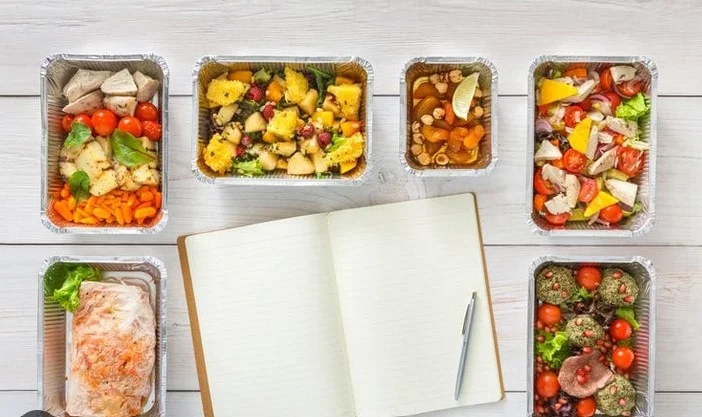How to Build a Healthy Meal Plan
Building a healthy meal plan is an effective way to ensure you’re getting all the essential nutrients your body needs. A well-balanced meal plan can help you maintain a healthy weight, improve energy levels, and support overall health. In this post, we’ll guide you through the process of creating a meal plan that meets your dietary needs.

Start with a Balanced Plate
The foundation of any healthy meal plan is balance. Each meal should include a variety of food groups: lean proteins, whole grains, healthy fats, and plenty of fruits and vegetables. Aim to fill half your plate with vegetables and fruits, one-quarter with lean protein, and the remaining quarter with whole grains. This balance helps provide your body with the right mix of nutrients, fiber, and energy.
For example, try a plate with grilled chicken, quinoa, and a side of roasted vegetables like broccoli and sweet potatoes. This combination gives you protein, healthy fats, complex carbohydrates, and essential vitamins and minerals.
Plan for Consistency and Variety
When planning your meals, consistency is key. However, variety is just as important. Include a range of different foods throughout the week to ensure you get all the nutrients your body needs. Rotate your protein sources (chicken, fish, tofu, beans), vary your vegetables, and switch up your grains (brown rice, barley, oats) to keep meals interesting and nutrient-dense.
Creating a weekly meal plan that includes different flavors and textures will prevent you from feeling bored with your meals while providing your body with diverse nutrients. Consistency in meal timing is also important for maintaining balanced energy levels.
Incorporate Healthy Snacks
Healthy snacks play an essential role in a meal plan. They help maintain energy between meals and prevent overeating at your main meals. Choose snacks that combine protein, fiber, and healthy fats, such as an apple with almond butter, a handful of nuts, or a yogurt with chia seeds. These nutrient-rich options will keep you satisfied and energized.
Try to plan your snacks ahead of time, just as you would your meals. This reduces the temptation to grab unhealthy processed foods when you’re hungry. Having healthy snacks on hand is a great way to stay on track with your nutrition goals.
Prepare Meals in Advance
Meal prepping is a time-saving technique that makes it easier to stick to your healthy meal plan. Set aside a day each week to prep your meals in advance. This could involve chopping vegetables, cooking grains, or preparing full meals that can be stored and reheated. Prepping meals ahead of time ensures you have healthy options readily available when hunger strikes.
Meal prep also reduces the likelihood of ordering takeout or reaching for unhealthy snacks. You can control portion sizes, avoid added sugars, and choose wholesome ingredients.
Stay Flexible and Listen to Your Body
While consistency is important, flexibility is equally crucial when building a healthy meal plan. Life happens, and sometimes you may need to adjust your meals based on your schedule, energy levels, or cravings. Listen to your body and be flexible with your meal planning.
If you find yourself craving a certain food, it’s okay to indulge in moderation. The key is to focus on overall balance throughout the week rather than stressing over one meal. A healthy meal plan is about making nourishing choices most of the time.
Conclusion
Building a healthy meal plan doesn’t have to be complicated. By focusing on balanced meals, planning for variety, incorporating healthy snacks, preparing meals in advance, and remaining flexible, you can create a meal plan that supports your health and fits your lifestyle. Start small, stay consistent, and enjoy the benefits of better nutrition and overall well-being.



